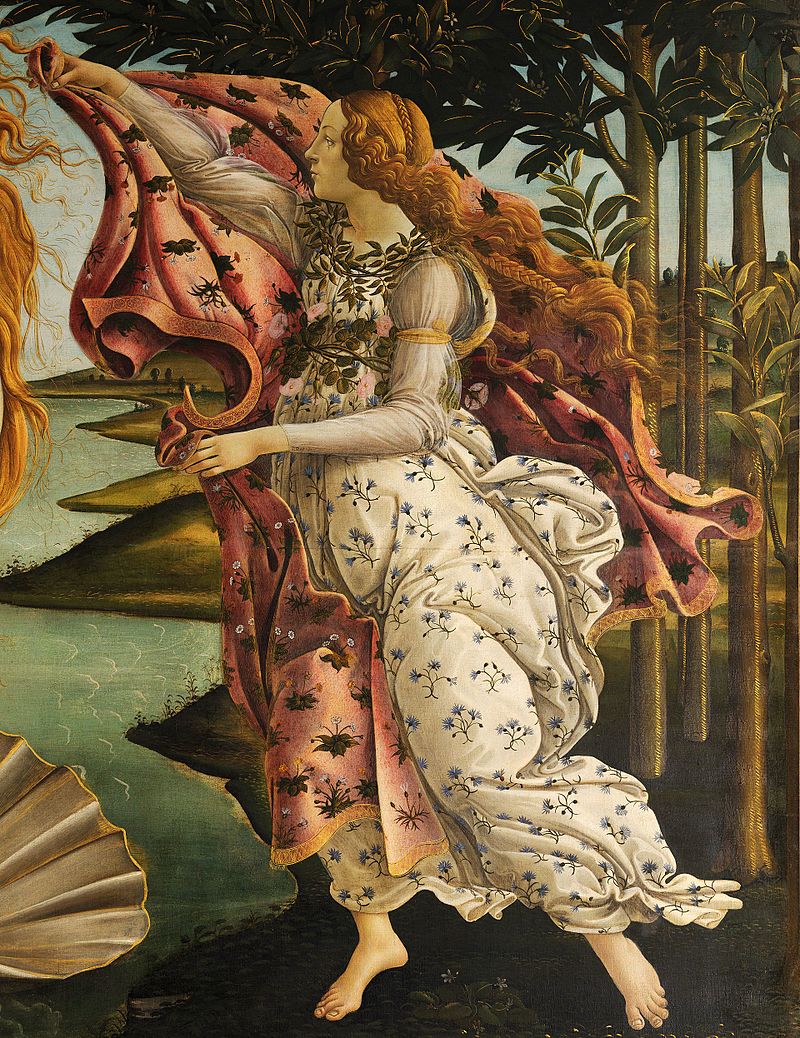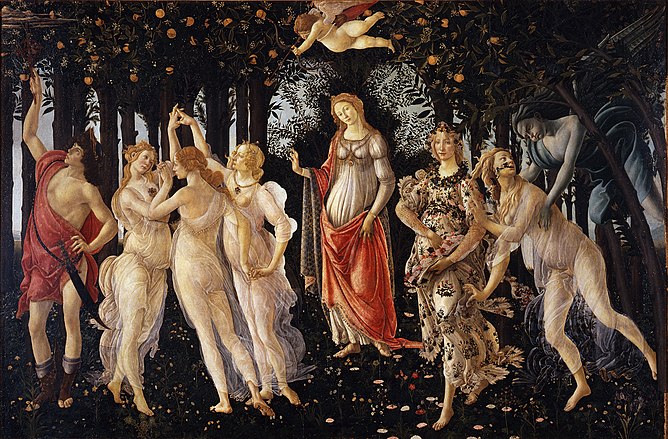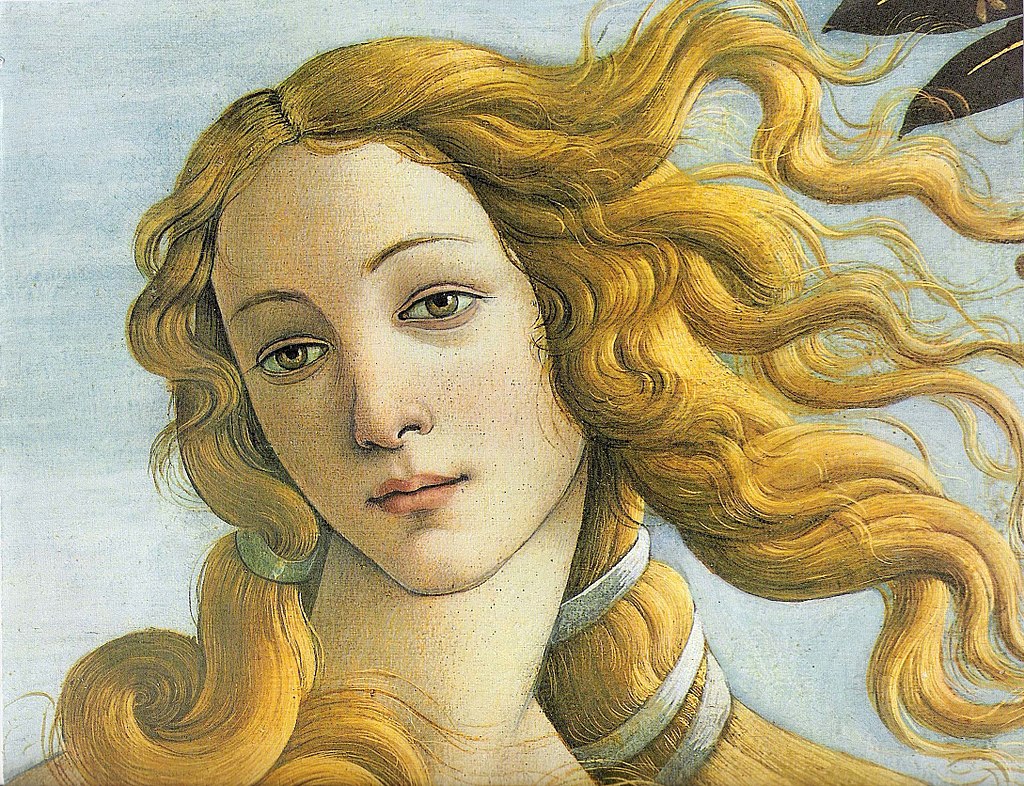Learn 10 small bites about Birth of Venus by Sandro Botticelli
Learn 10 small bites about Birth of Venus by Sandro Botticelli

The Birth of Venus , 1485 ca., The Uffizi Gallery

The Birth of Venus , 1485 ca., The Uffizi Gallery
Did You Know?
I’m your Venus! The Birth of Venus was painted by Sandro Botticelli in the mid-1480s. It depicts the goddess Venus arriving at the shore after her birth, emerging fully-grown from the sea.

The Hora of Spring
Gods everywhere. In the painting, you see Venus, goddess of love , but also Zephyr, god of the west wind blowing her to shore. One of the Horae, goddesses of the seasons , offers a cape to clothe Venus. Based on the floral decoration of her dress, she is the Hora of Spring.
On canvas. The painting was made on canvas. Painting on wood panels was far more common at the time , however, canvas was steadily increasing in popularity.

La Primavera, c. 1470s-1480s
La Primavera, c. 1470s-1480s
Just the two of us. The painting has a companion piece titled La Primavera that was executed 4 years after. La Primavera is a kind of sequel to Birth of Venus . They hang in the same room in the Uffizi Gallery in Florence, Italy.
It is big. The canvas is roughly 9 feet x 6 feet (172.5 cm x 278.9 cm)
She is floating. Art experts say that her pose is unnatural as the weight of the body is not distributed evenly either side of a central plumb line . She is not standing, but floating.
Breaking rules. Botticelli was certainly pushing the rules of convention with this work as having a large standing female nude as the central focus was unprecedented in post-classical Western painting.

Birth of Venus (detail)
Birth of Venus (detail)
La Bella Simonetta . Known as the greatest beauty of her age in Italy , Simonetta Vespucci was a noblewoman from Genoa . She is allegedly the model on which Botticelli based his Venus.
They lived happily ever after. Although it is not certain, the painting is surmised to have been commissioned to be offered as a wedding gift .
Don’t overthink it. While there are subtleties in the painting, its main meaning is a straightforward treatment of a traditional scene from Greek mythology . Its appeal is sensory and very accessible, hence its enormous popularity.
From Our Shop
Inspired by the goddess of love? Browse our collection of collectibles and gifts featuring Venus.



